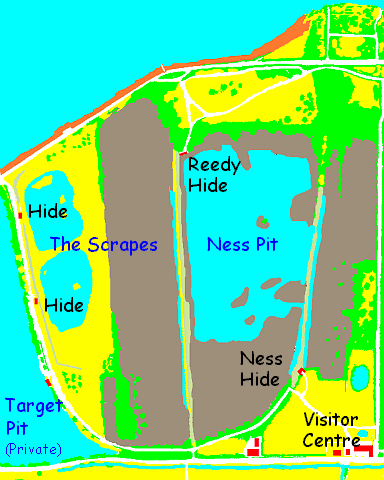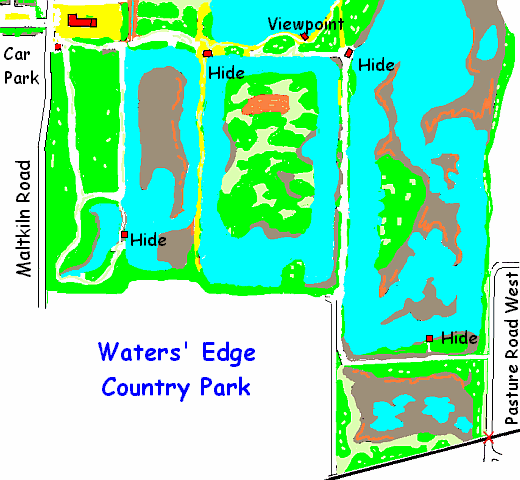| Travelling by bicycle or walking on foot to Barton-on-Humber along the River Humber from New Holland and through Barrow Haven woodyard (a public right of way) brings one to the outskirts of Waters' Edge Country Park, a project of reclamation and yet another place along the Humber Bank that encourages bird life. | |
| At this time the north end is being reclaimed still from the phosphogypsum dumped in the claypits by the BritAg chemical works that was once there. The southern end is open and found beyond the car park off Maltkiln Road beyond Barton Waterside. Cyclists can go into the country park but must give way to pedestrians. Other cyclists and walkers can, of course, come off the Humber bank and go past the ropery containing an art gallery, past Proudfoot supermarket and on to and beyond the railway station. | |
| Two sites of Special Scientific Interest are contained within the eighty six acre development. It was a former excavation for bricks and tiles, then a malt kiln site and finally a chemical and then the fertiliser works up to the 1970s. Now native trees have been planted as part of the project with the paths, facilities and ponds. The country park is open although final completion is not until 2002. Although the channels of water around the reedbeds are narrow, the water is deep (and there are life saving rings on site as well as notices warning of deep water). | |
These are the birds in the park:
|
As well as the birds there are:
|
| These grow in the country park: |
|
| As a test scheme, reeds are used to clean water, the pollutants consumed by the reeds and microbes. | |
| It's important that visitors do not stray from the paths or the hides, and do not point through the flaps of the hides. Shut the door before opening a flap. Dogs are allowed in the park but only on a lead. Refreshments are available at either the Ropeworks (coffee) or at Proudfoot's cafe. | |
| Continuing on westwards along Far Ings Road brings one to Far Ings Nature Reserve. It was a project begun in 1983 by the Lincolnshire Trust. |

|
| The origins were the same - flooded clay pits, where reed and willow moved in themselves. | |
| The Scrapes was created in 1986 just by removing top soil from a once cultivated area. This produced shallow water and islands. | |
There are migrating birds:
|
And there are nesting birds:
|
The freshwater lakes are full of microscopic life which support:
|
These in turn support:
|
Nesting birds include:
|
In winter wildfowl residents include:
|
There is extensive meadow which keeps warblers:
|
There are other birds too:
|
There are many butterflies in the meadow too:
|
Flowers appear in yellow, blue and white in May, including:
|
| Then there are reedbeds. In rotation, parts are cut for thatching which prevents scrub taking hold. Common reed houses food for birds, and it is hoped that the Bittern will nest again. | |
| Both the country park and the nature reserve are free entry, but Lincolnshire trust looks for support, including volunteers that look after the nature reserve and its creatures. No dogs are allowed at Far Ings. | |
| Waters' Edge is a North Lincolnshire Council project at http://www.northlincs.gov.uk | |
| Far Ings is a project of The Lincolnshire Trust, a voluntary body, and it is staffed by volunteers on weekends in summer, Sundays in winter, and bank holidays. There is a field studies room. | |
| The Lincolnshire Trust is based at: | |
|
Banovallum House |
|
|
The Warden is at:
Far Ings Visitor Centre |
|
